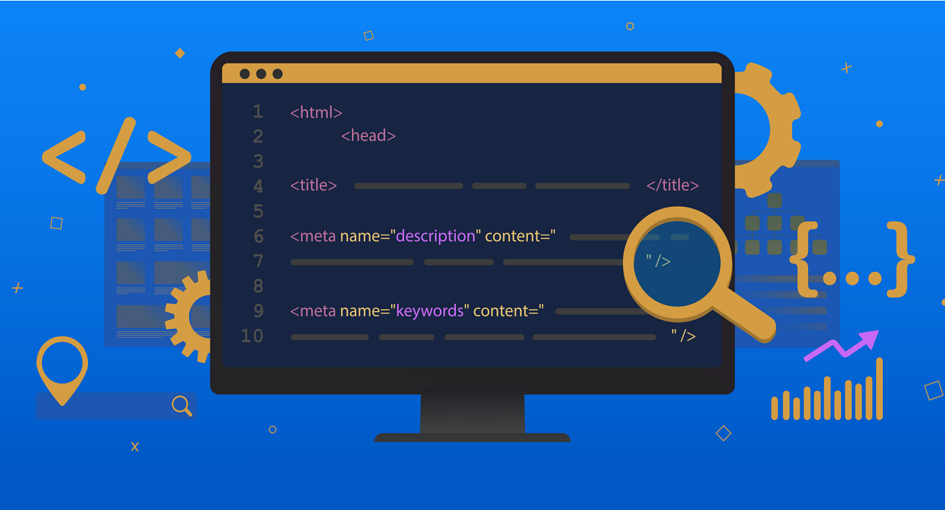
In the world of digital marketing and search engine optimization (SEO), meta descriptions often take a back seat to other on-page and off-page optimization efforts. However, underestimating the importance of a well-crafted meta-description can be a costly mistake. These concise snippets of text not only influence your website’s click-through rate but also play a role in search engine rankings and user engagement. This comprehensive guide delves into the art of creating excellent meta descriptions that captivate audiences, entice clicks, and boost your SEO efforts.
Before diving into the intricacies of crafting an excellent meta description, let’s start with the fundamentals. A meta-description is a brief summary of a webpage’s content, typically consisting of 150-160 characters. It serves as a concise preview of what users can expect when they click on a search engine result. While meta-descriptions may not directly influence search engine rankings, they play a vital role in encouraging users to visit your site. When a meta-description is well-crafted, it can significantly impact click-through rates, user engagement, and ultimately, the success of your website.
Crafting an excellent meta-description involves more than just summarizing your webpage. It’s an art that requires a deep understanding of your target audience, effective use of keywords, and the ability to entice users to take action. To create compelling meta-descriptions, you must first grasp the preferences and needs of your audience. What are they looking for, and how can your content fulfill those needs? Keyword research is another critical aspect. By identifying the keywords your audience is likely to use in search queries, you can strategically incorporate them into your meta descriptions.
An excellent meta-description should not only inform but also engage and persuade. Use actionable language that encourages users to click on your link. Incorporate a clear and compelling call to action (CTA) that tells users what to expect when they visit your page. Highlight the benefits of your content and what sets it apart from the competition. If applicable, include numbers or symbols to make your meta-description stand out and grab users’ attention. By following these strategies, you can optimize your meta-descriptions for higher click-through rates (CTR) and improved user engagement.
Despite the potential benefits of meta-descriptions, many websites make common mistakes when crafting them. One prevalent error is keyword stuffing, where websites overload their meta-descriptions with keywords in an attempt to improve rankings. However, this practice can result in unnatural and unappealing descriptions that deter users. Another mistake is duplicating meta-descriptions across multiple pages. Each page should have a unique meta-description that accurately represents its content. Neglecting to update meta-descriptions as your content evolves is another pitfall to avoid. Outdated meta-descriptions can mislead users and harm your SEO efforts.
While crafting a compelling meta-description primarily involves creative writing and audience understanding, there are technical considerations to keep in mind. meta-descriptions are created using HTML tags and attributes. Understanding how to implement these correctly is essential for ensuring your descriptions display correctly in search engine results. Additionally, schema markup, a type of structured data, can enhance your meta-descriptions by providing additional context and potentially resulting in rich snippets in search results.
Measuring the success of your meta-descriptions is a crucial step in the optimization process. You can use analytics and tracking tools to monitor the performance of your meta-descriptions, including CTR and user engagement metrics. A/B testing, which involves creating variations of meta-descriptions and comparing their performance, can help you identify the most effective strategies. By continuously analyzing and refining your meta-descriptions based on data and user feedback, you can maximize their impact on your website’s success.
Crafting an excellent meta-description is a fundamental aspect of on-page SEO that often goes underestimated. A well-optimized meta-description can significantly impact your website’s click-through rates and, consequently, its overall search engine ranking. To achieve this, you must keep certain key principles in mind. First and foremost, the length of your meta-description matters. Aim for a concise and impactful description, ideally around 150-160 characters. This length ensures that your description fits well within search results and doesn’t get cut off, providing users with a complete and compelling snippet.
Furthermore, if you’re optimizing for a local business, consider incorporating location-specific keywords into your meta-descriptions. Local optimization is crucial for businesses that serve a specific geographic area. By tailoring your meta-descriptions to include location details, you can enhance your visibility in local search results. This, in turn, can lead to higher click-through rates from users in your area who are more likely to convert into customers.
In conclusion, crafting an excellent meta-description is a multifaceted endeavor that combines art, science, and strategy. When executed effectively, meta-descriptions can transform your website’s click-through rate, enhance SEO rankings, and elevate user engagement. By following the guidance provided in this comprehensive guide, you’ll be well-equipped to create meta-descriptions that not only describe your content but also inspire action and drive results.